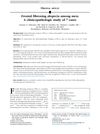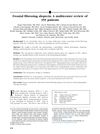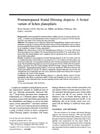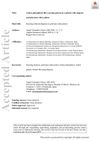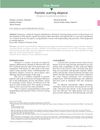Updated Diagnostic Criteria for Frontal Fibrosing Alopecia
December 2017
in “
Journal of The American Academy of Dermatology
”

TLDR New criteria for diagnosing frontal fibrosing alopecia include specific scalp and eyebrow hair loss as major factors and other hair loss areas and hair analysis as minor factors.
In the document from January 1, 2018, the authors discuss the need for updated diagnostic criteria for frontal fibrosing alopecia (FFA), a type of cicatricial alopecia that can be misdiagnosed as other conditions. They propose that the presence of cicatricial alopecia on the frontal, temporal, or frontotemporal scalp without follicular keratotic papules on the body should be a major criterion, and eyebrow involvement, which occurs in 73%-81% of cases, should also be a major criterion. Trichoscopic findings and histopathologic features should be considered minor criteria, as well as involvement of other areas like the occipital area, facial hair, sideburns, or body hair. They suggest excluding concomitant lichen planopilaris (LPP) as a criterion due to its infrequency in FFA patients and also removing symptoms as a criterion due to their lack of specificity. The updated criteria require two major criteria or one major and two minor criteria for diagnosis. The authors emphasize that these updated criteria should help homogenize future research and allow for the differential diagnosis of FFA from other alopecias.
